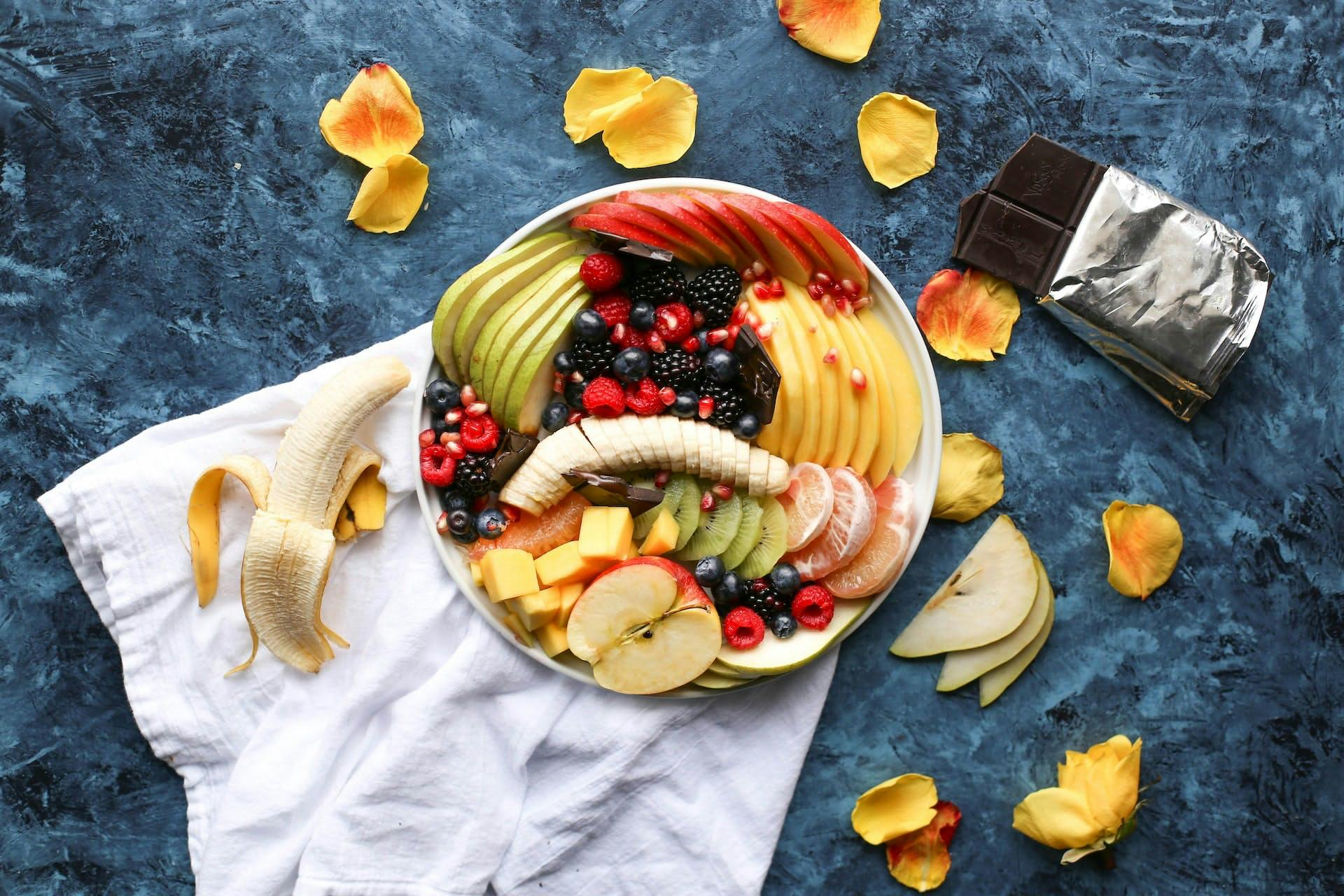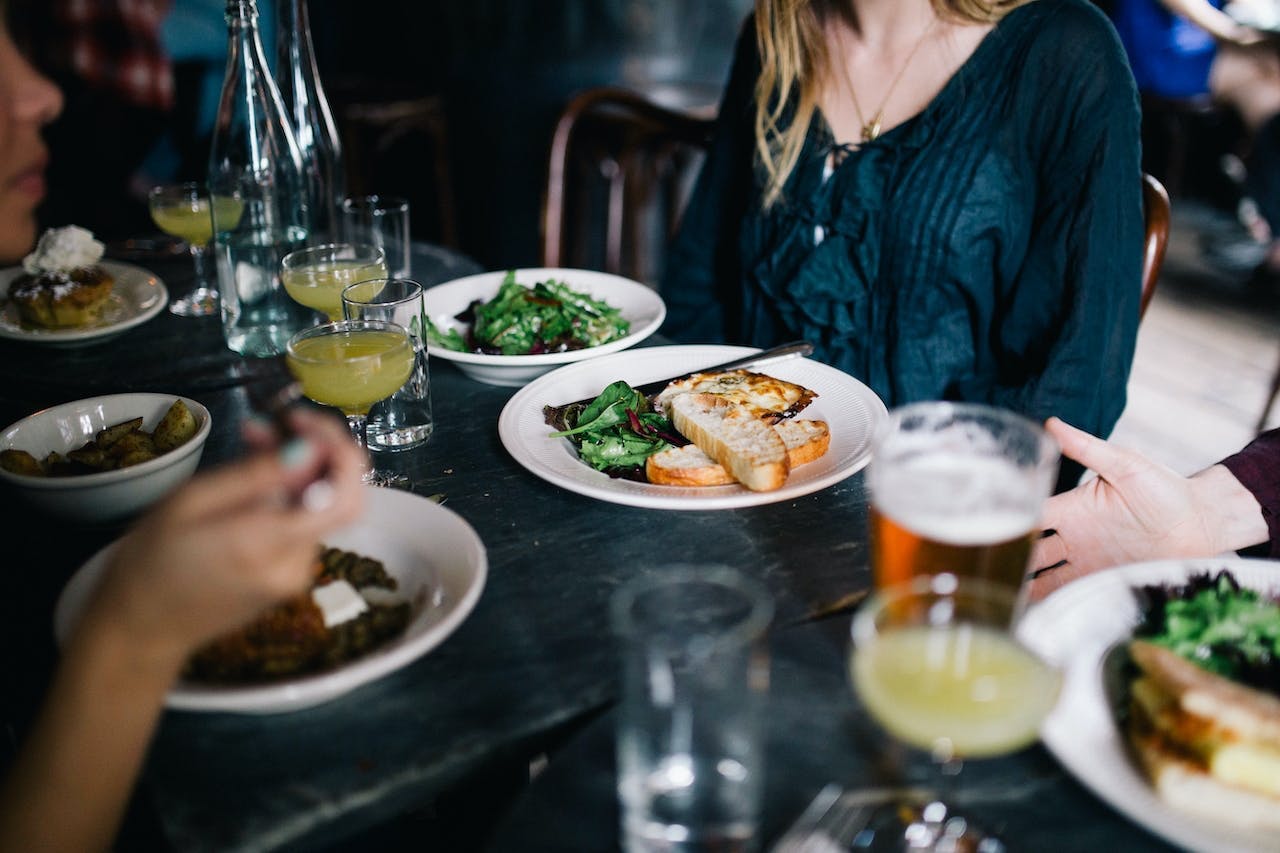Research indicates that consistently consuming added sugar is linked to a greater risk of developing cardiovascular disease, insulin resistance, and Type 2 diabetes, among other metabolic issues [1].
Still, managing your sugar intake isn’t always easy. With 68% of packaged foods in the U.S. containing some form of added sweetener, you might find yourself unknowingly eating more sugar than you’d guess — even if you’re saying no to desserts and sweet beverages [2].
But why do we crave sugar in the first place, and what happens in the brain and body when they kick in? Does the latest science give us ways to address our everyday sugar cravings?
The science behind sugar cravings
The simple sugar glucose (C6H12O6), which is found naturally in a variety of foods including nuts, vegetables, fruits, starches, and grains, is your body’s preferred energy source.
In fact, your body converts any carbohydrate you consume — including fructose (found in many fruits) and sucrose (the equivalent of table sugar) — into glucose so that your cells can use it as energy in the form of adenosine triphosphate (ATP), which powers the chemical reactions that keep you alive.
Why we're hardwired to love sugar
Sugar triggers a complex series of reactions in the brain.
Historically speaking, sugar intake was primarily linked to the energy needed for survival — access to sweet foods supported the ability to stay alive under harsh conditions.
Fatty foods trigger similar circuitry in the brain.
But while excess sugar and fat intake may have been beneficial a few thousand years ago when such energy-rich foods were scarce, the abundance of added sugar (and the rising intake of it) in today’s grocery store aisles is indirectly contributing to an ongoing metabolic health crisis [4].
Food manufacturers are aware of the science behind sugar cravings, too. They formulate foods with extra sugar and fat since this combination has the highest palatability and triggers chemicals. While we're not hunter-gatherers anymore, we are still hardwired to crave these calorie-dense foods.
Naturally occuring sugars vs. added sugars
It is important to differentiate naturally occurring sugars in whole foods from added sugars and manufactured sweeteners, such as high-fructose corn syrup.
Naturally occurring sugars, like those in fruit, honey, and vegetables, have been in our diets for thousands of years. Yet the rise of diabetes and obesity epidemics in the United States began around the 1980s, in large part due to the proliferation of added sugar — including but not limited to refined sugarcane, concentrates, and manufactured sugar — in countless food items both obvious (candy, colas, desserts) and relatively unassuming (crackers, breads, sauces) [5].
Why "sugar addiction" is a misnomer
While sugar can feel like an addiction, thinking of it that way may not help us get to the solution, and science doesn't seem to support it. Most of the research on sugar addiction has been done in animals, so the findings aren’t directly applicable to human populations.
As a 2016 review notes, there is little evidence that supports the idea of sugar addiction in humans — instead, behaviors that mirror addiction (like bingeing) “likely arise from intermittent access to sweet tasting or highly palatable foods, not the neurochemical effects of sugar" [6].
How to beat sugar cravings: 5 essential tips
Though they may not reflect an underlying addiction, sugar cravings are real — and there are several research-supported techniques that can help you deal with them.
1. Address glucose crashes
In addition to activating our dopamine system, regular intake of added sugar (as well as refined carbs) can lead to glucose spikes and crashes, which are associated with the production of ghrelin (the hormone that induces feelings of hunger and appetite). This can create a vicious cycle that can yield negative effects on your metabolic health over time.
To minimize abrupt and dramatic changes in your blood sugar levels, try:
- Eating protein and a salad before carbohydrates. Scientists researching the effects of food order in 11 patients with obesity and Type 2 diabetes found that glucose levels were 29%, 37%, and 17% lower at the 30-, 60-, and 120-minute checks when the participants ate vegetables and protein before the carbohydrates, compared to after [7].
- Consuming fat with carbohydrates (i.e., peanut butter with an apple, or nuts with berries, etc.), and making sure you’re consuming fiber (which helps you feel full for longer and steadies your blood sugar levels) [8].
2. Reset your taste buds
While cutting sugar from your diet for a month or two might be difficult at first, resetting your taste buds can be one of the best ways to get to the root of your sugar cravings.
If you can stick to a sugar-free diet within this time frame, you might notice the next time you take a bite of something sweet or sip on a sugary drink that your taste buds have adjusted — so much so, in fact, that you may even find the item at hand inedible or too sweet for your liking.
In fact, a small 2014 study found that 18 out of 19 participants (95%) who cut out sugar and artificial sweeteners for 2 weeks found that sweet foods and drinks they had previously consumed tasted sweeter or were even too sweet — and 86.6% stopped craving sugar after 6 days [9].
3. Examine your lifestyle
Your lifestyle habits and practices can have a significant impact on your appetite and even trigger sugar cravings. If you’re unsure of what these are, you may want to start journaling and/or logging a food diary.
Writing down your meals and snacks (as well as the behaviors and emotions that come with them) on a consistent basis can be an effective way to lose weight, according to a 2017 study — but the habit can also help you pinpoint the connection between your day-to-day and food choices even if you’re not committed to weight loss [10].
The researchers who oversaw the study noted that it is possible participants who wrote out their meals frequently were more mindful of their dietary choices and motivated to avoid writing down any fatty or sugary foods.
If anything, keeping a log of what you eat may help you find that you dip into the cookie jar when you’re stressed at work, or that you tend to reach for sugary energy drinks following a late-nighter.
If you want to beat sugar cravings for good, being aware of these patterns and adjusting them accordingly (through lifestyle and diet) can help in your journey to reduce your intake.
4. Distract yourself
When you experience a sugar craving, you may find that distracting yourself temporarily can help you overcome the feeling. There are many productive ways you can do this — such as going on a walk, taking a short nap, calling a friend, and organizing a drawer or room in your home — so feel free to experiment with different types of activities and note how effective each one is in mitigating your craving.
5. Hydrate
Sometimes, what we mistake for hunger may actually signal dehydration.
In fact, researchers in 2008 found that study participants only “appropriately” consumed water when they were thirsty (but not hungry) 2% of the time [11].
So the next time you’re feeling the urge to eat something sugary, drink 8 oz. of water and try distracting yourself for a few minutes to see if the impulse goes away.
You may also find it helpful to infuse your water with fresh fruits, veggies, and herbs for added flavor or snacking on water-rich whole foods (such as cucumbers and melons).
Key Takeaways
We know that your brain and body’s response to sugar can be robust. Understanding the science of why we’re hardwired to enjoy sugar and fat is the first step to managing your cravings. Here are some tips to help you build a toolkit of strategies you can use whenever the urge for sugar arises.
- Manage your blood sugar spikes and crashes by eating protein and vegetables before carbohydrates; pairing fats and carbohydrates; and consuming enough fiber.
- Reset your tastebuds by going on a one-month sugar fast. (Avoid artificial sweeteners as well.)
- Examine your eating habits by keeping a detailed journal that tracks the ingredients, timing, and quantity of all your meals, snacks, and beverages.
- Distract yourself by going on a walk, taking a nap, calling a friend, or tidying up your home whenever a craving arises.
- Drink an 8-ounce glass of water and wait a few minutes when you feel the urge to eat sugar.
Overcoming your sugar cravings isn’t an overnight accomplishment. There's no need to rush into trying all of the above lifestyle shifts at once, if that feels overwhelming to you. Instead, take things one step at a time, remember to celebrate your wins, and consider finding a friend or two to give you encouragement and hold you accountable to your goals.
References:
- https://www.ncbi.nlm.nih.gov/pmc/articles/PMC4822166/
- https://www.nytimes.com/2016/05/22/upshot/it-isnt-easy-to-figure-out-which-foods-contain-sugar.html
- https://www.imrpress.com/journal/FBL/23/12/10.2741/4704
- https://www.ncbi.nlm.nih.gov/pmc/articles/PMC8775991/
- https://www.ncbi.nlm.nih.gov/books/NBK44656/
- https://www.ncbi.nlm.nih.gov/pmc/articles/PMC5174153/
- https://www.medicalnewstoday.com/articles/295901
- https://pubmed.ncbi.nlm.nih.gov/26561625/
- https://www.ncbi.nlm.nih.gov/pmc/articles/PMC4500487/
- https://www.ncbi.nlm.nih.gov/pmc/articles/PMC5568610/
- https://europepmc.org/article/med/18499200#S7


